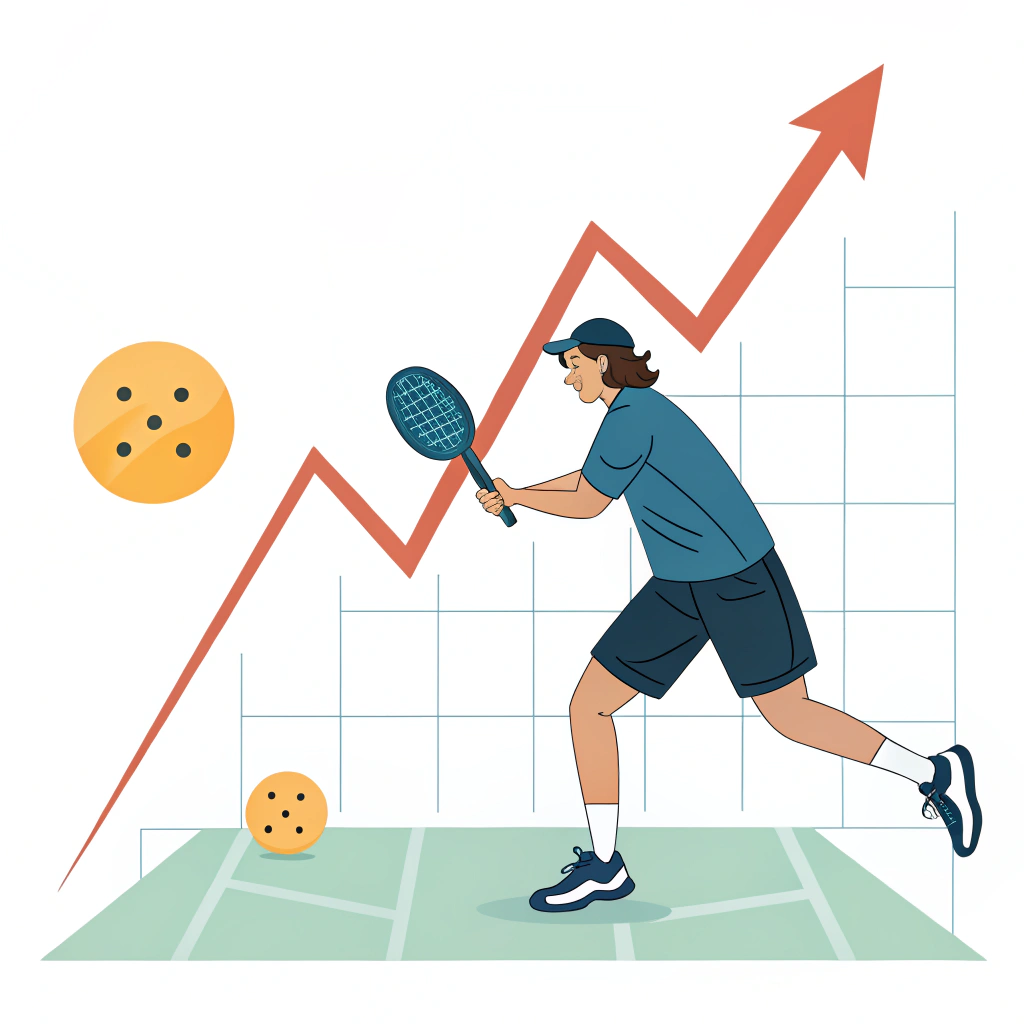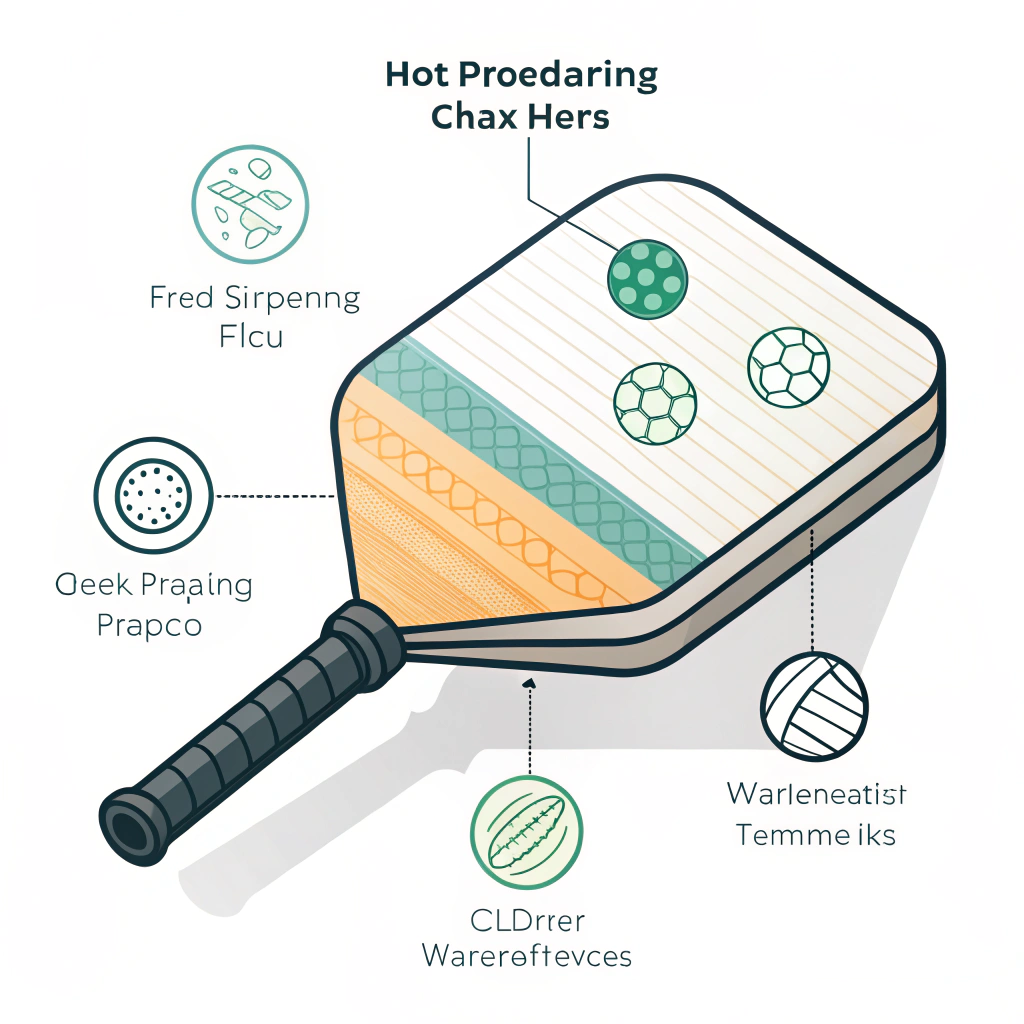The pickleball market is set for significant growth, with emerging trends and data insights reshaping investment decisions and brand strategy in sports equipment. In this article, we explore forecasted trends up to 2025, delve into the data behind rising consumer demand, and discuss how manufacturers and brands can strategically position themselves to capture market share.
Recent market studies predict that the pickleball market will experience rapid expansion in the next few years, fueled by an increasing interest in recreational and competitive sports. According to industry reports, the growth rate is expected to outpace traditional sports equipment sectors as more consumers and players are drawn to this fast-paced and accessible sport. Investors and brands need to focus on quality, innovation, and strategic positioning to capitalize on this growth.
Several critical drivers are shaping this market trend:
- Increased Consumer Awareness: Social media and grassroots initiatives have brought pickleball to a broader audience.
- Investment in High-Performance Equipment: Manufacturers are pushing technological boundaries to offer advanced materials like 3K Carbon Fiber1, 12K Carbon Fiber, and T300 Carbon Fiber which enhance player performance.
- Global Competitions and Professional Leagues: With tournaments gaining popularity, the demand for top-tier gear is on the rise, influencing market dynamics and pricing strategies.
At the heart of the competitive advantage in the pickleball market is innovation in raw materials and production processes. High-performing paddles are essential for both competitive play and recreational enjoyment. Leading manufacturers employ advanced techniques to ensure durability, control, and power.
| Material Type | Advantages | Typical Applications |
|---|---|---|
| 3K Carbon Fiber | High rebound force, excellent durability, reduced vibration | Competitive paddles requiring precise power control |
| 12K Carbon Fiber | Smoother surface, superior hardness, extreme impact resistance | High-performance paddles for rigorous competition |
| T300 Carbon Fiber | Balanced strength and light weight | Paddles benefiting from both agility and resilience |
| Fiberglass (E-Glass) | Excellent elasticity and tensile strength, wider sweet spot | Recreational paddles focusing on ball control |
| Composite Materials | Balanced benefits of combined materials, offering versatility | Custom paddle designs blending power with control |
A significant trend in production is the move towards combining materials to create superior performance paddles. This includes composites that blend the best properties of carbon fiber and fiberglass, as well as innovative core materials like Nomex Honeycomb Core2, Aluminum Honeycomb Core, and Polymer Honeycomb Core. These innovations ensure that the paddles not only perform better but also last longer under rigorous use.
Three primary production processes set the standard in paddle manufacturing today:
- Hot Pressing: Ensures high production efficiency and structural integrity, making it ideal for large-scale manufacturing. However, it can sometimes alter the material's natural properties.
- Cold Pressing: Offers precise control over the paddle’s thickness and internal structure, crucial for maintaining optimal ball feel.
-
- Thermoforming3: Allows for intricate designs and precise material distribution, perfect for crafting premium paddles that deliver on performance and aesthetics.
Each technique has its unique advantages and disadvantages. Manufacturers must balance cost, production scale, and performance requirements based on target market segments and branding strategy.
Data Analytics4 play a central role in unlocking market insights that can aid strategic investment decisions in the sports equipment industry. Here, we break down key statistical observations relevant to the pickleball market:
- Growth Projections: Market forecasts indicate annual growth rates between 10%-15% up to 2025. This growth is significantly driven by increased demand in North America and a rising interest in Europe and Asia.
- Consumer Behavior: Surveys reveal that a majority of pickleball players are seeking quality in paddle performance, favoring products that promise enhanced durability and technical advantage. These insights are critical for aligning product development with consumer expectations.
- Competitive Landscape: Brands and manufacturers such as NEX Pickleball are leading through innovation. The ability to customize products and tailor manufacturing processes has provided a competitive edge. Strategic partnerships with established brands like Joola and Selkirk further affirm market credibility.
Table 1 provides a snapshot of the key market segments and growth drivers for pickleball equipment:
| Market Segment | Estimated Growth Rate (2025) | Key Driver | Investment Focus |
|---|---|---|---|
| Recreational Play | 10% - 12% | Health, community engagement | Affordable, reliable equipment |
| Competitive Play | 12% - 15% | Professional tournaments, collegiate sports | Technologically advanced, durable gear |
| Custom/Branded Equipment | 8% - 10% | Team branding, premium user experience | Customization, aesthetic design |
These figures not only guide investment decisions but also help shape the messaging and value proposition for future products.
B2B buyers, particularly senior marketing managers and brand strategists, need robust strategies to differentiate themselves in a competitive market. Here are several strategic insights and recommendations for aligning brand initiatives with market trends:
Brands must harness market and consumer data to drive product innovation. Investing in research and development to explore new composite materials and advanced production methods can significantly enhance product performance while lowering returns and warranty claims.
Focusing on aspects such as durability, precision, and customization allows brands to cater to both competitive and recreational segments. Emphasizing features like improved vibration reduction and superior weight distribution can be a game-changer, particularly when supported by robust performance data and third-party testing.
Collaborating with established names in the sports equipment industry can provide significant market advantages. For example, NEX Pickleball’s strategic role as an OEM5 for leading brands injects credibility and reliability into its product offerings. Such partnerships can lead to collaborative marketing campaigns, improved distribution channels, and enhanced brand recognition.
Consumer insights suggest that today's players are not only looking for functional benefits but also for products that elevate their game experience. Marketing strategies should highlight technological superiority, innovative materials, and quality assurances. Transparent communication of data-backed performance metrics in marketing materials will resonate well with analytical and discerning B2B buyers.
Efficiency in production, quality control, and supply chain management are imperative to ensure consistent delivery of high-quality products. Manufacturers who leverage data analytics to predict demand fluctuations and streamline operations will have a competitive edge in times of rapid market expansion.
Consider the case of a leading OEM manufacturer in the sports equipment sector. By investing in thermoforming technology and advanced composite materials, the company managed to reduce production defects by 15% while increasing overall performance benchmarks. Their strategic approach, which combined precise material selection and a data-driven production process, allowed them to secure long-term contracts with internationally recognized brands.
Industry experts also affirm that the integration of advanced analytics is transforming how companies approach product development and market strategy. Data from recent consumer surveys indicate that players prioritize innovations that directly enhance their competitive performance, such as superior grip, balance, and reduced vibration. This insight has propelled manufacturers to focus on technological improvements that meet these specific demands.
Additionally, market segmentation analysis shows distinct consumer clusters based on skill level, usage frequency, and prior investment in high-performance gear. Brands that tailor their product offerings and marketing strategies to these segments can better capture customer loyalty and drive repeat purchases.
For marketing managers and brand strategists looking to refine their investment and product positioning in the pickleball market, here are actionable recommendations:
- Conduct In-Depth Market Analytics: Utilize comprehensive data tools to analyze consumer behavior, competitive moves, and emerging trends. Regularly update your market forecast to stay ahead of the curve.
- Invest in R&D: Prioritize research in areas such as composite materials and innovative production techniques. Experimentation and continuous improvement will lead to breakthroughs that can redefine market standards.
- Enhance Brand Collaboration: Seek strategic partnerships with well-recognized OEMs. These collaborations not only provide technical expertise but also increase market reach and credibility.
- Streamline Supply Chains: Optimize production processes to achieve cost efficiency and maintain quality. Visualize the supply chain data to identify bottlenecks and mitigate risks.
- Tailor Marketing Campaigns: Craft messaging that resonates with analytical consumers by presenting clear data and performance benchmarks. Highlight differentiators like advanced materials, quality control measures, and customization options.
By implementing these strategies, brands can establish a strong foothold in the expanding pickleball market and navigate the competitive landscape with confidence.
Q: What factors contribute to the growth of the pickleball market?
A: Key growth drivers include increasing consumer awareness, investment in high-performance equipment using advanced materials like 3K, 12K, and T300 Carbon Fiber, and the rising popularity of competitive tournaments that boost demand for premium paddles.
Q: How do advanced production techniques enhance paddle performance?
A: Advanced processes such as hot pressing, cold pressing, and thermoforming allow for precise control over paddle design and material distribution, enhancing durability, reducing vibration, and improving overall performance in competitive play.
Q: What strategic actions should brands consider to capitalize on the pickleball market trend?
A: Brands should invest in data-driven product innovation, focus on delivering a strong value proposition through improved performance features, leverage partnerships with established OEM manufacturers, and optimize supply chain efficiency to maintain high production quality.
-
3K Carbon Fiber – Click to learn more about the advanced composite material known as 3K Carbon Fiber, its properties, and applications in high-performance sports equipment manufacturing. ↩
-
Nomex Honeycomb Core – Click to understand the benefits of using Nomex Honeycomb Core in composite structures, including its strength, lightweight properties, and impact resistance in paddle design. ↩
-
Thermoforming – Click to explore the thermoforming process, an innovative manufacturing technique used to mold materials with precision for enhanced product aesthetics and functionality. ↩
-
Data Analytics – Click to discover how data analytics is transforming business strategy, offering insights into market trends, consumer behavior, and operational efficiencies for B2B decision makers. ↩
-
OEM – Click to read about the role of OEMs (Original Equipment Manufacturers) in the sports equipment industry, their value in partnerships, and how they drive innovation and market credibility. ↩







